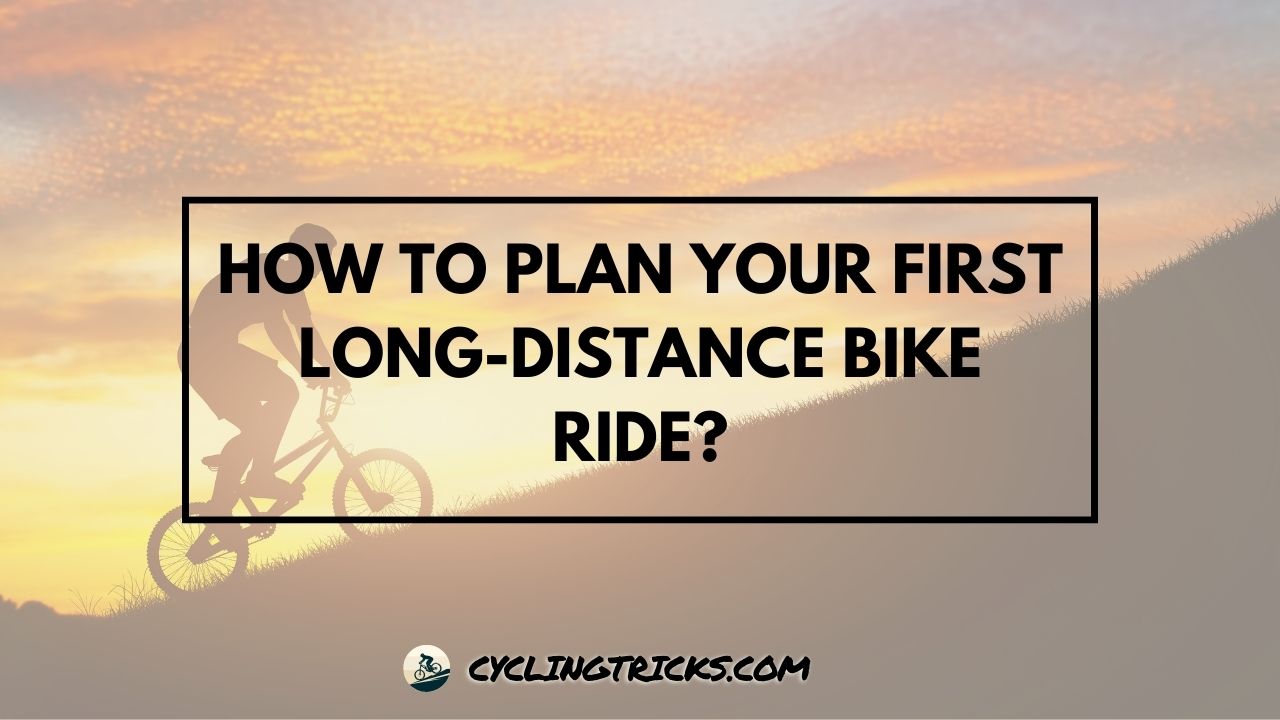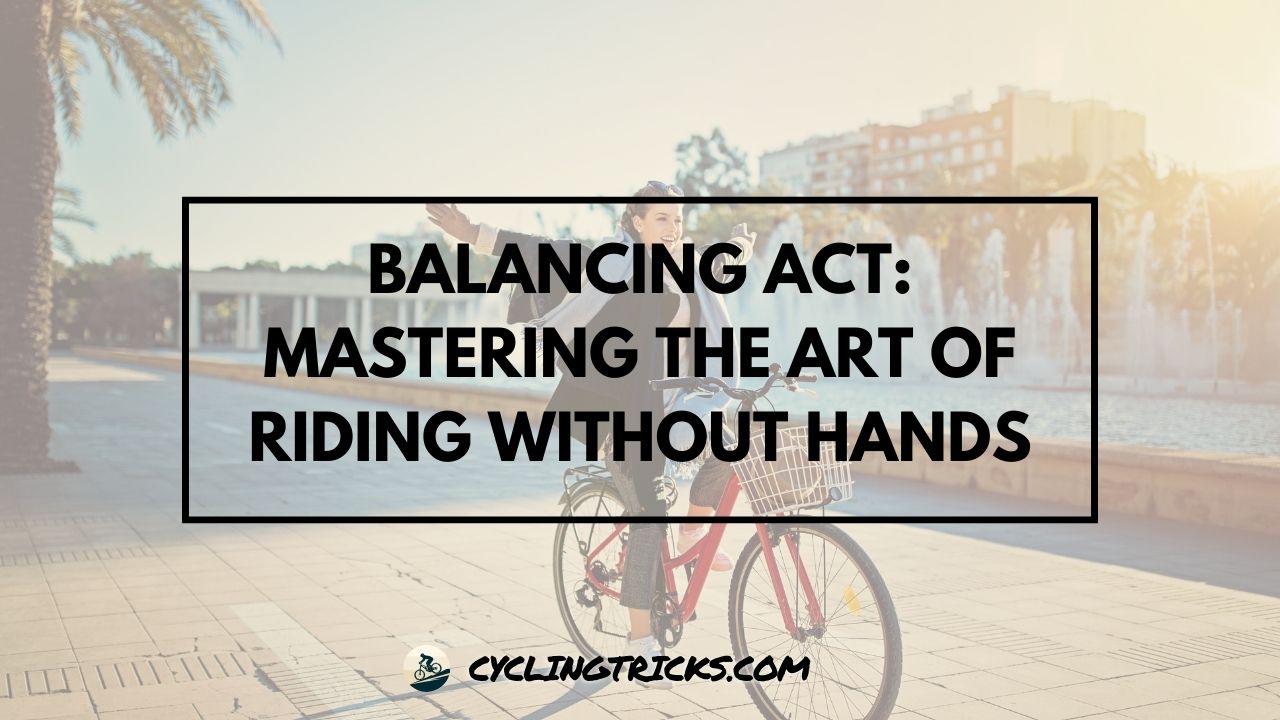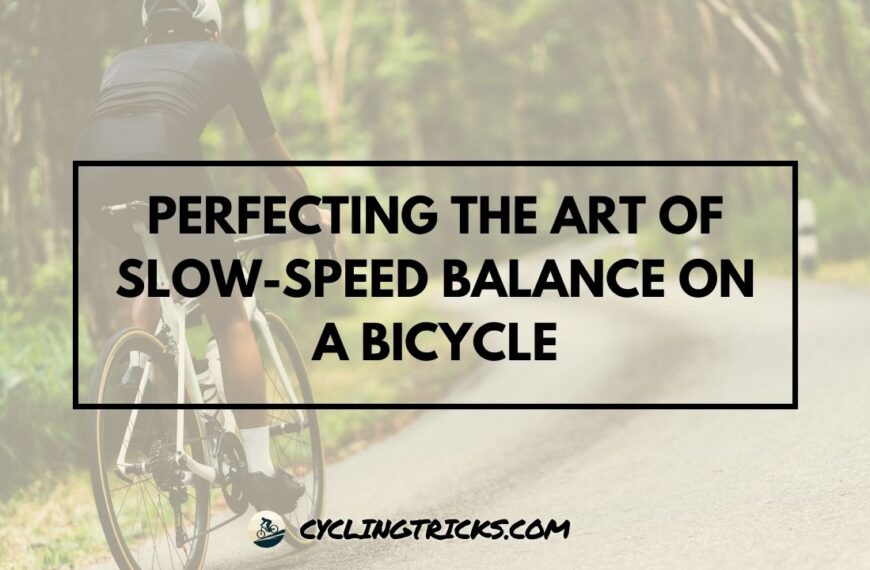Whether you’re a novice cyclist or someone looking to challenge their limits, planning is the key to a successful and enjoyable experience.
In this guide, we will walk you through the essential steps to make your first long-distance cycling venture a memorable one.
Benefits of Long-Distance Cycling:
Cycling isn’t just a way to get from one place to another; it’s a fantastic activity with loads of perks, especially when you go on those longer rides. Let’s check out these cool advantages:
1. Improved Cardiovascular Health:
Riding your bike for longer distances gives your heart a great workout. It makes your heart muscles stronger, helps blood flow better, and lowers the chance of heart issues. As you pedal, your heart gets good at its job, making everyday activities easier on your heart.
Cycling isn’t only about the journey; it’s about your heart getting fit and ready for whatever comes your way. So, when you’re planning your first long-distance ride, think of it as a friendly boost for your heart!
Regular cycling reduces the risk of heart disease by 46%.
Also learn all the benefits of cycling for health.
2. Increased Endurance:
Endurance is like your body’s superpower, and cycling for a long haul is an awesome way to boost it. When you slowly ride for longer times, your muscles get better at their job. You’ll notice you can go that extra mile – literally!
Imagine being able to ride longer without feeling tired. That’s what endurance does for you. So, when you’re gearing up for your first long ride, know that each pedal is making you stronger and ready for more adventures.
Cyclists who engage in long-distance rides experience a 20% increase in endurance levels.
3. Weight Management:
Want to drop a few pounds or keep a healthy weight? Long-distance cycling is your pal. It burns calories, speeds up your metabolism, and helps keep those extra pounds away. It’s not just a workout; it’s a fun way to stay fit.
Picture this: you’re cycling through scenic routes, enjoying the wind on your face, and, at the same time, managing your weight. It’s like having your cake and eating it too – or in this case, biking and staying fit simultaneously!
On average, cyclists burn around 400-1000 calories per hour, aiding in weight management.
4. Mental Well-being:
Long-distance cycling isn’t just about the physical; it’s a great boost for your mental well-being too. As you pedal through the miles, the rhythmic motion can clear your mind, reduce stress, and bring a sense of calm. It’s like giving your brain a refreshing breeze, making you feel more relaxed and focused.
When you plan your first long-distance bike ride, think of it as a journey for your mind as much as your body. The open road becomes a pathway to mental clarity and a break from the hustle, offering you a chance to enjoy the ride and find peace within.
Cycling has been linked to a 20% reduction in stress levels and improved mental well-being.
5. Reduced Stress:
One of the magical things about long-distance cycling is its stress-busting power. Riding your bike for extended periods releases feel-good hormones that can help combat stress. The open-air, the changing scenery, and the steady rhythm of your pedals work together to create a natural stress-relief therapy session.
Imagine leaving your worries behind with each pedal stroke, feeling the stress melt away. So, when you gear up for your first long ride, know that you’re not just covering distance; you’re leaving stress in the dust.
A study found that cycling for just 30 minutes can significantly reduce cortisol levels, the stress hormone.
6. Joint Flexibility:
Contrary to common belief, cycling is gentle on your joints, and long rides can improve joint flexibility. The smooth, repetitive motion of pedaling helps lubricate your joints, keeping them flexible and reducing stiffness. It’s like a joint-friendly dance that keeps you moving smoothly.
When planning your first long-distance ride, remember that your joints are in for a treat. Cycling isn’t just about the distance; it’s a graceful movement that keeps your joints happy and ready for more adventures.
7. Boosted Immune System:
Long-distance cycling has a remarkable impact on your immune system. Regular rides stimulate the production of immune cells, making your body better equipped to fight off illnesses. It’s like giving your immune system a little training, preparing it to be a superhero against germs and viruses.
8. Better Sleep:
Long-distance cycling doesn’t just tire your body; it also sets the stage for a good night’s sleep. The physical exertion from your ride, combined with the fresh air and sense of accomplishment, can contribute to better sleep quality. It’s like a natural lullaby, helping you drift into a more restful slumber at the end of the day.
As you plan your first long-distance bike ride, think of it as not just a daytime adventure but a journey that ensures you’ll enjoy a night of sound, rejuvenating sleep.
Cyclists report better sleep quality, with 67% experiencing improved sleep patterns.
Again repeating, the connection between cycling and sleep is amazing. So must consider cycling for getting a better sleep.
9. Enhanced Lung Capacity:
Cycling for long distances does wonders for your lungs. Steady and controlled breathing during your rides helps improve lung capacity over time. It’s like giving your lungs a workout, making them more efficient and capable of taking in more oxygen.
Picture your lungs expanding with each breath as you pedal along. When you plan your first long ride, know that you’re not just exploring new landscapes; you’re expanding your lung capacity for a healthier, more active life.
Cycling improves lung function and capacity, leading to a 15% increase in respiratory efficiency.
10. Social Engagement:
Long-distance cycling isn’t always a solo adventure; it’s an excellent way to connect with others who share your passion.
Whether you join a cycling club or hit the road with friends, the social aspect adds a layer of enjoyment to your rides. It’s like creating a community on wheels, where you share stories, laughter, and the love of cycling.
As you gear up for your first long ride, think beyond the pedals. It’s not just about the road; it’s about the people you meet along the way, turning your cycling journey into a social adventure.
Setting Your Goal:
Setting a clear goal is your compass for the upcoming long-distance cycling expedition. Your goal could be as diverse as conquering a specific distance, mastering challenging terrains, or simply relishing the joy of the ride itself.
It’s akin to plotting a roadmap for your cycling venture – a roadmap that not only guides you through the physical journey but also imbues your adventure with a sense of purpose and accomplishment.
Before embarking on the ride, take a moment to define your objective; it’ll be the motivational force pushing you through every pedal stroke.
Assessing Your Fitness Level:
Embarking on a long-distance cycling journey without a proper understanding of your current fitness level is like setting sail without checking the weather. Before gearing up for your adventure, conduct an honest self-assessment of your endurance, strength, and stamina.
Acknowledging where you stand in terms of fitness forms the bedrock for a tailored training program.
This assessment ensures that your journey is not only enjoyable but also safe and sustainable. It’s about crafting a personalized plan that respects your current capabilities while propelling you toward newfound strengths.
Choosing the Right Bike:
Selecting the right bike isn’t merely a logistical decision; it’s about finding a trusty companion for the road ahead. Consider the nuances – the type of bike, the appropriate frame size, and the nature of the terrain you’ll be traversing.
A well-suited bike becomes an extension of yourself, enhancing both comfort and performance. It transforms your long-distance ride from a mere physical feat into a seamlessly enjoyable experience.
Before venturing out, ensure your bike is not just a mode of transportation; it’s a reliable partner, ready to accompany you on the thrilling twists and turns of your cycling adventure.
Essential Gear and Equipment:
Getting ready for a long bike ride? Cool! Here’s what you need:
| Gear | Description |
|---|---|
| Bike | Choose a comfortable and well-fitted bike, such as a road bike, touring bike, or gravel bike. |
| Helmet | Wear a properly fitted helmet to ensure head protection in case of accidents. |
| Clothing | Opt for padded cycling shorts, a jersey, and appropriate shoes for a comfortable riding experience. |
| Tools and Spares | Carry a multi-tool, spare tubes, tire levers, a pump, and essential tools for on-the-go bike repairs. |
| Navigation | Use a GPS device or smartphone app for route navigation. |
| Hydration System | Pack a water bottle or hydration pack to stay hydrated during the ride. |
| Snacks | Include energy bars, fruits, or trail mix for quick and easy-to-carry snacks. |
| Safety Gear | Invest in reflective clothing, lights, gloves, knee pads, and elbow pads for enhanced safety. |
| First Aid Kit | Carry a basic first aid kit with essentials for minor injuries. |
| Weather-appropriate Clothing | Dress in layers and pack a light, waterproof jacket based on the weather forecast. |
Route Planning:
Planning your route? Awesome! Here’s how:
- Know the Land: Understand the land you’re riding on. Check how hilly it is and if there are challenges. This helps you pick the right bike and get mentally ready.
- How Far and How Fast: Decide how far you want to go each day and set a good pace. Think about your fitness, planned breaks, and how long you’ll be out.
- See the Sights: Find cool routes with interesting things to see. Look up landmarks and spots you’d like to check out on your ride.
- Where to Sleep: Plan where you’ll stop for the night. Make sure it’s the right distance for your daily goal and has what you need.
- Take Breaks: Plan rest stops where you can refill water, grab snacks, and rest. Know where bike shops are just in case.
- Weather Watch: Keep an eye on the weather each day. Be ready for changes and plan accordingly.
- Stay Safe: Choose safe and bike-friendly roads. Avoid busy highways. Share your plans with someone and carry a charged phone for emergencies.
- Be Flexible: Stay flexible with your plan. Be open to changes, side trips, or weather surprises.
- Try It Out: If you can, test parts of your route beforehand. Get to know the roads and any challenges you might face.
- Digital Maps Help: Use apps like Google Maps, Ride with GPS, or Strava for planning. They show routes and reviews, making your planning easier.
Now, with the right gear and a good plan, you’re all set for a fantastic long-distance bike ride! Enjoy the ride and the adventure that comes with it.
Weather Conditions and Recommended Gear Table:
When planning your route, it’s crucial to consider the weather conditions you might encounter during your long-distance cycling journey. Being prepared for different weather scenarios ensures a smoother and more enjoyable ride.
Take a look at the table below for recommendations on the gear suitable for various weather conditions:
| Weather Condition | Recommended Gear |
|---|---|
| Sunny | Wear sunglasses, use sunscreen, and choose breathable clothing to stay cool. Consider a hat for additional shade. |
| Rainy | Pack a waterproof jacket, wear quick-drying clothing, and use fenders to minimize splashes. Waterproof shoe covers can also be beneficial. |
| Cold/Windy | Layer up with thermal clothing, use windproof outer layers, and wear gloves and a hat to retain body heat. Consider a neck gaiter for added warmth. |
| Hot | Opt for lightweight and breathable clothing. Stay hydrated and use a cooling towel or bandana to manage heat. |
| Variable | Pack layers to adjust to changing conditions. Consider a convertible jacket or clothing with zip-off features for adaptability. |
Here are some of the best safety tips for cycling in bad weather including rainy, foggy, and windy.
Training Program:
Getting ready for a long bike ride means getting your body in gear. Let’s talk about a simple training plan:
- Start Slow: Begin with shorter rides and slowly increase the distance. Your body needs time to get used to the longer journeys.
- Build Stamina: Gradually extend the time you spend on the bike. This helps your muscles get stronger and builds your stamina.
- Include Hills: If your route has hills, add them to your training. This way, you’re ready for any ups and downs during your ride.
- Rest is Important: Don’t forget rest days. Your body needs time to recover. It’s okay to take it easy sometimes.
- Mix It Up: Include different types of rides – some short, some long, and maybe a few with faster pedaling. Mixing it up keeps things interesting.
- Strength Training: Add some off-bike exercises to build strength. Squats, lunges, and core exercises can help your biking muscles.
- Listen to Your Body: If you’re tired or feel any pain, give your body a break. Listening to how you feel is key to staying healthy.
- Practice Long Rides: As your big ride approaches, include a few longer rides to get your body used to being in the saddle for an extended time.
Remember, the goal is to build up gradually. Listen to your body and enjoy the process!
Nutrition and Hydration:
Now, let’s chat about what to eat and drink to keep you fueled up and ready to roll:
- Stay Hydrated: Drink water regularly, not just when you’re thirsty. Dehydration can slow you down, so keep sipping throughout your ride.
- Pre-Ride Fuel: Have a good meal a couple of hours before your ride. Include carbs for energy and some protein for staying power.
- On-the-Bike Snacks: Pack easy-to-eat snacks like energy bars, bananas, or trail mix. They keep your energy levels up without weighing you down.
- Hydration Plan: Plan where you’ll get water along your route. Stay hydrated to keep your body working at its best.
- Post-Ride Recovery: After your ride, have a snack with both carbs and protein. It helps your muscles recover and gets you ready for the next adventure.
- Avoid Overeating: While riding, avoid big meals. Small, regular snacks are better for keeping your energy steady.
- Experiment Before the Big Day: Try out different foods and drinks during your training rides to see what sits well with your stomach.
- Listen to Hunger Signals: Pay attention to your body’s hunger signals. If you’re hungry, eat. It’s your body telling you it needs fuel.
Remember, everyone’s body is different, so find what works best for you. Stay fueled, stay hydrated, and enjoy your ride!
Mental Preparation:
Long-distance cycling isn’t just a physical challenge; it’s a mental journey too. Here’s how to get your mind in the game:
- Positive Mindset: Cultivate a positive outlook. Believe in your ability to complete the ride and focus on the joy of the journey.
- Visualize Success: Picture yourself completing the ride. Visualization can boost confidence and motivation.
- Break It Down: Instead of thinking about the entire distance, break it into smaller, manageable segments. Celebrate each milestone.
- Mindful Breathing: Practice mindful breathing to stay calm and centered. Focus on your breath during challenging moments.
- Stay Present: Enjoy the ride in the present moment. Pay attention to your surroundings and relish the experience.
- Mantras and Affirmations: Use positive mantras or affirmations to reinforce confidence. Repeat them during tough stretches.
- Adaptability: Be ready for unexpected challenges. A flexible mindset helps you adapt to changes and enjoy the adventure.
- Embrace Discomfort: Accept that discomfort is part of the journey. Develop resilience to push through tough moments.
- Reflect on Achievements: Remind yourself of past achievements. Reflecting on your capabilities builds mental strength.
- Enjoy the Process: Focus on the process, not just the destination. Embrace the ups and downs as integral parts of the ride.
Safety Tips:
Safety is a top priority for any cyclist. Here are essential tips to keep you safe on your long-distance journey:
- Helmet Always: Wear a helmet. It’s your best defense against head injuries in case of accidents.
- Check Your Bike: Before each ride, inspect your bike. Ensure brakes, tires, and gears are in good working condition.
- Visibility is Key: Use lights and reflective gear, especially if riding in low-light conditions. Be visible to motorists.
- Follow Traffic Rules: Obey traffic signals and rules. Your safety depends on predictable behavior on the road.
- Be Predictable: Signal your intentions to motorists and fellow cyclists. Predictable moves prevent accidents.
- Stay Alert: Keep an eye on the road, anticipate traffic movements, and be aware of your surroundings.
- Plan Your Route: Choose safe and well-traveled routes. Avoid busy highways and opt for cycling-friendly paths.
- Carry Identification: Have identification on you, and let someone know your route and estimated return time.
- Emergency Essentials: Carry a basic first aid kit, a charged phone, and essential tools for quick bike repairs.
- Weather Awareness: Check the weather forecast before your ride. Be prepared for changes and adjust your plans accordingly.
Prioritize safety, stay vigilant, and enjoy your long-distance ride with peace of mind.
Important Tips for Long-Distance Cycling:
1. Invest in a comfortable and well-fitted bike:
Selecting the right bike is akin to finding the perfect companion for your adventure. Ensure the bike is not only comfortable but also well-fitted to your body. A bike that suits you reduces the risk of discomfort and enhances the overall experience.
Consider factors like the frame size, saddle, and handlebar (used for handling) position to create a customized fit that allows you to pedal with ease and joy.
The right bike fit can reduce the risk of injury by 30%.
2. Gradually increase mileage to build endurance:
Think of your cycling journey as a gradual climb rather than a sudden leap. Start with shorter rides and progressively extend the distance. This methodical approach allows your body to adapt and build endurance.
Like chapters in a book, each ride becomes a stepping stone, laying the foundation for longer and more enjoyable journeys. By pacing yourself, you ensure that the thrill of cycling remains a sustained adventure.
A 10% weekly increase in mileage is recommended to prevent overtraining injuries.
3. Stay hydrated and maintain proper nutrition:
Fueling your body is as essential as fueling your bike. Stay hydrated by sipping water consistently throughout your ride. Pack a mix of snacks, incorporating carbohydrates for energy and proteins for endurance.
This nutritional balance energizes you, preventing fatigue and enhancing your overall performance. It’s like carrying a mini-picnic that not only fuels your body but also adds to the pleasure of your cycling expedition.
4. Use padded cycling shorts for comfort:
Comfort is a key factor in making your long-distance cycling experience delightful. Invest in padded cycling shorts; they act as a cushion between you and the bike seat.
The added padding minimizes discomfort, especially during extended rides, ensuring that your focus remains on the journey rather than any potential soreness.
Think of them as your cozy travel companions, providing a comfortable layer between you and the road.
5. Regularly check and maintain your bike:
Your bike is more than just a mode of transportation; it’s a partner in your adventure. Regular bike maintenance ensures that your two-wheeled companion is always ready for the road. Check tire pressure, inspect brakes, and ensure that all components are in good working order.
It’s like giving your bike a health check, guaranteeing a smooth and trouble-free journey. By caring for your bike, you enhance its reliability and longevity, ensuring that it’s always ready for the next exciting ride.
6. Take breaks to stretch and avoid stiffness:
During your long ride, think of breaks as pit stops for both you and your bike. Stretching helps loosen tight muscles and prevents stiffness. Take short breaks to stretch your legs, arms, and back.
Simple stretches like reaching for your toes or rotating your ankles can make a significant difference. Treating your body to these brief interludes ensures flexibility and comfort as you continue your cycling adventure.
7. Protect yourself with appropriate safety gear:
Safety should always ride shotgun during your cycling journey. Invest in the right safety gear to shield yourself from unforeseen situations. A well-fitted helmet is non-negotiable, offering crucial protection for your head.
Reflective clothing enhances visibility, especially during low-light conditions. Gloves, knee pads, and elbow pads add an extra layer of defense. Prioritize safety gear to safeguard yourself and enjoy your ride with added peace of mind.
8. Plan your route and be prepared for contingencies:
A well-planned route is like a roadmap for a successful journey. Before you hit the road, meticulously plan your route, considering factors like terrain, accommodations, and rest stops.
Familiarize yourself with potential contingencies, such as alternative routes and nearby services. Having a backup plan ensures you’re prepared for unexpected situations, adding a layer of confidence to your long-distance cycling adventure.
9. Pace yourself to avoid burnout:
Long-distance cycling is a marathon, not a sprint. Pacing yourself is crucial to avoid burnout and enjoy the entire journey. Find a comfortable rhythm that suits your fitness level and stick to it. Consistent pacing helps conserve energy for the entire ride, preventing early fatigue.
Think of it as finding your sweet spot, where you can maintain a steady and sustainable pace, ensuring a satisfying and enduring cycling experience.
10. Listen to your body and rest when needed:
Your body is your best guide during a long-distance ride. Listen to its signals and take breaks when needed. If you feel fatigued or notice any discomfort, don’t hesitate to rest. Resting allows your muscles to recover, preventing overexertion and potential injuries.
Think of these breaks as essential pauses, allowing you to recharge physically and mentally. By tuning in to your body’s cues, you ensure a more enjoyable and sustainable long-distance cycling adventure.
11. Carry essential tools and spare parts:
Think of your bike as your trusted companion on the road—equipping yourself with essential tools and spare parts is like having a first aid kit for your two-wheeled friend. Pack a multi-tool, spare tubes, a pump, and tire levers.
These basics of bike maintenance tools can address minor issues and keep you rolling smoothly. Being prepared with the right tools ensures that unexpected hiccups don’t turn into major roadblocks during your journey.
12. Pay attention to weather forecasts:
The weather can be a game-changer during a long ride. Stay ahead of the elements by keeping an eye on weather forecasts. Knowing what weather to expect allows you to dress appropriately and plan for any adjustments in your route.
Whether it’s rain, sun, or wind, being weather-wise ensures that you’re prepared and can adapt to changing conditions during your cycling adventure.
13. Stay visible with reflective clothing:
Visibility is your best friend on the road, especially when the sun sets. Invest in reflective clothing to make sure you’re seen by motorists and fellow cyclists.
Reflective vests, jackets, or even reflective strips on your gear significantly enhance your visibility in low-light conditions. Being visible adds an extra layer of safety to your journey, ensuring that others can spot you from a distance.
14. Learn basic bike repair skills:
Empower yourself with the knowledge of basic bike repair skills—it’s like having your roadside assistance. Learn how to fix a flat tire, adjust your brakes, and troubleshoot common issues.
Armed with these skills, you can address minor problems on the spot, keeping your ride smooth and uninterrupted. Consider it a crash course in bike self-sufficiency that adds confidence to your cycling experience.
15. Stay connected for emergencies:
In the age of technology, staying connected is a safety net. Carry a fully charged phone and, if possible, a power bank. Having a phone allows you to call for help in emergencies or navigate if you deviate from your planned route.
It’s like having a lifeline that ensures you can reach out when needed, providing an added layer of security during your long-distance cycling adventure.
Conclusion
As you get ready for your long bike journey, remember that getting ready is super important for a fun time. Pick the right stuff, think about safety, and keep an eye on the weather – all these tips make your ride smoother and more fun.
When you follow these ideas while you ride, it makes your journey better, and you’ll have awesome memories. Hope your pedals spin easily, and every bit of the road feels like a cool adventure. Happy biking!









